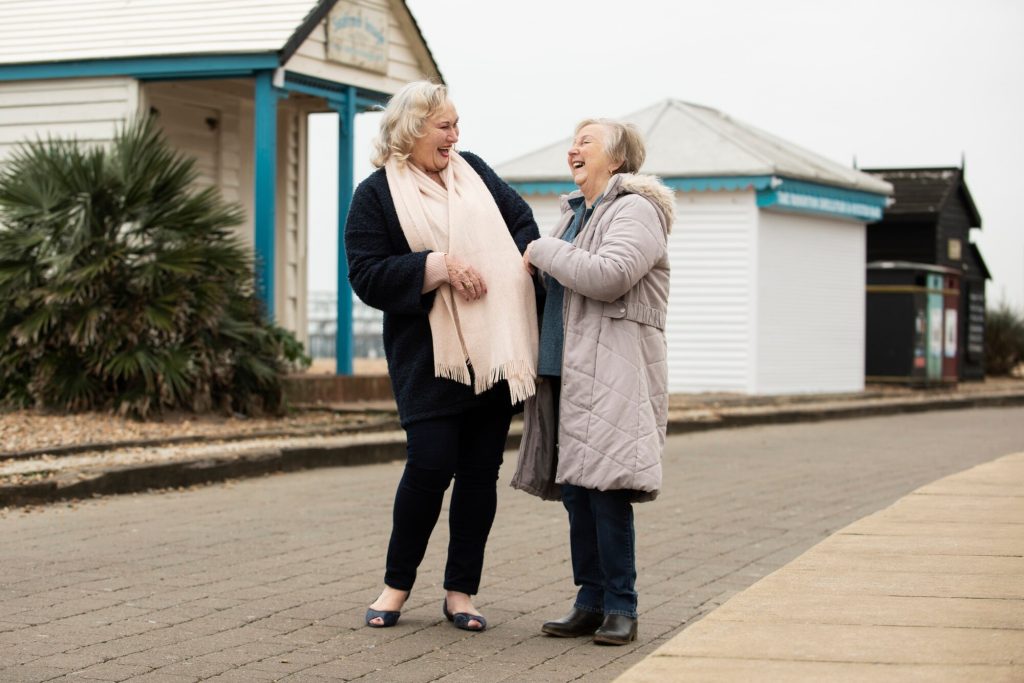As we age, our living needs change.
Choosing the right living arrangement post-retirement can be a daunting task.
Retirement villages and over 55 communities are popular choices. But what sets them apart?
This article aims to shed light on the differences between these two options.
We’ll delve into their characteristics, amenities, and services. We’ll also explore the financial and legal aspects of each.
By the end, you’ll have a clearer understanding of which option might be the best fit for your lifestyle and needs.
Let’s start this journey of discovery together.

Understanding Retirement Villages
Retirement villages are designed for older adults who seek a balance between independence and support.
They offer a variety of housing options, from apartments to freestanding homes.
Residents typically have access to a range of amenities and services.
These communities often have a minimum age requirement, usually around 55 or 60.
However, the average age of residents tends to be higher.
Retirement villages are not just about housing.
They aim to provide a lifestyle that caters to the needs and interests of their residents.
Let’s delve deeper into the characteristics of retirement villages.
Characteristics of Retirement Villages
Retirement villages are often larger than over 55 communities.
They can accommodate hundreds, sometimes thousands, of residents.
The housing options vary widely, from compact apartments to spacious villas.
Some retirement villages offer different levels of care within the same community.
This allows residents to transition from independent living to assisted living as their needs change.
The ownership structures can also vary.
Some retirement villages operate on a leasehold basis, while others offer residents the chance to buy their property.
Let’s now explore the amenities and services typically found in retirement villages.

Amenities and Services in Retirement Villages
Retirement villages often boast a wide range of amenities.
These can include swimming pools, fitness centers, and communal dining areas.
Many villages also offer a variety of social activities and clubs.
These can range from book clubs and gardening groups to dance classes and movie nights.
Some retirement villages provide on-site healthcare facilities.
Others may have partnerships with local healthcare providers.
Support services such as housekeeping, laundry, and meal delivery are often available.
These services aim to make life easier and more enjoyable for residents.
Exploring Over 55 Communities
Over 55 communities, also known as lifestyle or age-restricted communities, cater to active, independent older adults.
They offer a variety of housing options, similar to retirement villages.
However, these communities typically do not provide higher levels of care such as assisted living or nursing care.
Residents are generally healthy and able to live independently.
Over 55 communities often have a strong focus on lifestyle and social activities.
They aim to create a vibrant, active community where residents can enjoy their retirement years.
Let’s take a closer look at the characteristics of over 55 communities.
Characteristics of Over 55 Communities
Over 55 communities are typically smaller than retirement villages.
They may consist of a few dozen to a few hundred homes.
The housing options can range from apartments to single-family homes.
These communities often have a strong focus on lifestyle and social activities.
Residents typically own their homes, although some communities may offer rental options.
Over 55 communities usually have a minimum age requirement for residents.
However, they do not typically provide higher levels of care such as assisted living or nursing care.
Now, let’s explore the amenities and lifestyle typically found in over 55 communities.
Amenities and Lifestyle in Over 55 Communities
Over 55 communities often offer a range of amenities designed to support an active lifestyle.
These can include fitness centers, swimming pools, and golf courses.
Many communities also have clubhouses or community centers that serve as social hubs.
Residents can participate in a variety of social activities and clubs.
These can range from fitness classes and hobby groups to social events and outings.
Some communities may also offer services such as lawn care and exterior home maintenance.
These services aim to free up residents’ time so they can enjoy the lifestyle and amenities the community offers.
Key Differences Between Retirement Villages and Over 55 Communities
While retirement villages and over 55 communities may seem similar, they have key differences.
These differences can significantly impact the lifestyle, costs, and level of care available to residents.
Understanding these differences is crucial when deciding which option is the best fit for your needs and lifestyle.
Let’s delve into the key differences between retirement villages and over 55 communities.
Age Restrictions and Implications
One of the main differences between retirement villages and over 55 communities is the age restriction.
Retirement villages typically do not have a minimum age requirement.
However, they are designed to cater to the needs of older adults, particularly those who require some level of care.
On the other hand, over 55 communities have a minimum age requirement for residents.
These communities are designed for active, independent older adults who do not require higher levels of care.
Housing Options and Ownership
Housing options and ownership structures also differ between retirement villages and over 55 communities.
In retirement villages, residents typically lease their homes from the village operator.
Some retirement villages may offer a lease-for-life arrangement, while others may offer shorter leases.
In contrast, residents in over 55 communities typically own their homes.
Some communities may offer rental options, but ownership is more common.
Cost Considerations and Financial Models
The cost structures and financial models of retirement villages and over 55 communities also differ.
Retirement villages often have a complex cost structure that can include an entry fee, regular maintenance fees, and exit fees.
These costs can be substantial and may impact the affordability of living in a retirement village.
On the other hand, over 55 communities typically have a simpler cost structure.
Residents usually pay for the purchase of their home and a regular maintenance fee.
Care Services and Support
The level of care and support services available is another key difference between retirement villages and over 55 communities.
Retirement villages often provide a range of care services, from independent living to assisted living and nursing care.
These services are designed to support residents as their care needs change over time.
In contrast, over 55 communities typically do not provide higher levels of care.
Residents are generally healthy and able to live independently, with the community’s amenities and activities designed to support an active lifestyle.
Legal and Contractual Considerations
When considering a move to a retirement village or an over 55 community, it’s important to understand the legal and contractual obligations involved.
These obligations can significantly impact your rights as a resident and your financial commitments.
It’s advisable to seek legal advice before signing any agreements.
This will ensure you fully understand the terms and conditions, and any potential implications.
Let’s explore the typical agreements for both retirement villages and over 55 communities.
Retirement Village Agreements
Retirement village agreements can be complex.
They typically include terms regarding the lease or license to occupy the property, the services provided, and the fees payable.
These agreements also outline the conditions for leaving the village and any exit fees that may apply.
It’s crucial to understand these terms, as they can have significant financial implications.
Always read the agreement carefully and seek legal advice if needed.
Over 55 Community Agreements
Over 55 community agreements are typically simpler than retirement village agreements.
They usually include terms regarding the purchase of the property, the services provided, and the fees payable.
These agreements may also include rules about the use of common facilities and the community’s management.
As with retirement village agreements, it’s important to read the agreement carefully and seek legal advice if needed.
Understanding your rights and obligations can help ensure a smooth transition to your new community.
Social Aspects and Community Life
The social aspects and community life can greatly influence your experience in a retirement village or an over 55 community.
Both offer opportunities for social interaction and community involvement.
However, the nature and extent of these opportunities can vary.
Let’s delve into the social life in both types of communities.
Community Activities and Social Life in Retirement Villages
Retirement villages often have a vibrant social scene.
They typically offer a range of activities, from hobby clubs to fitness classes.
These activities provide opportunities for residents to socialize and pursue their interests.
Some retirement villages also organize outings and special events.
These can foster a strong sense of community among residents.
Community Activities and Social Life in Over 55 Communities
Over 55 communities also offer various activities for residents.
These can range from book clubs to gardening groups.
Many over 55 communities have communal facilities, such as clubhouses or pools, where residents can gather.
Some communities also organize social events and outings.
These activities can help create a lively and engaging community atmosphere.
Making the Right Choice for Your Retirement
Choosing between a retirement village and an over 55 community is a significant decision.
It can greatly impact your lifestyle and well-being during your retirement years.
Therefore, it’s crucial to consider various factors before making a choice.
Factors to Consider When Choosing
Firstly, consider your lifestyle preferences.
Do you prefer a more active and social lifestyle, or do you value peace and quiet?
Secondly, consider your current and future health needs.
Will you require access to healthcare services or assistance with daily tasks?
Lastly, consider your financial situation.
Can you afford the costs associated with living in a retirement village or an over 55 community?
Visiting and Experiencing Communities
Before making a decision, it’s advisable to visit several retirement villages and over 55 communities.
This will give you a feel for the atmosphere and lifestyle in each community.
During your visit, observe the facilities, the staff, and the residents.
Try to participate in community activities if possible.
This will help you determine if the community is a good fit for you.
Conclusion: Aligning Your Needs with the Right Community
In conclusion, the choice between a retirement village and an over 55 community is a personal one.
It depends on your lifestyle preferences, health needs, and financial situation.
Both options offer unique benefits and cater to different needs and preferences.
Therefore, it’s essential to thoroughly research and visit multiple communities before making a decision.
Remember, the goal is to find a community where you can enjoy your retirement years to the fullest.









Leave a Reply